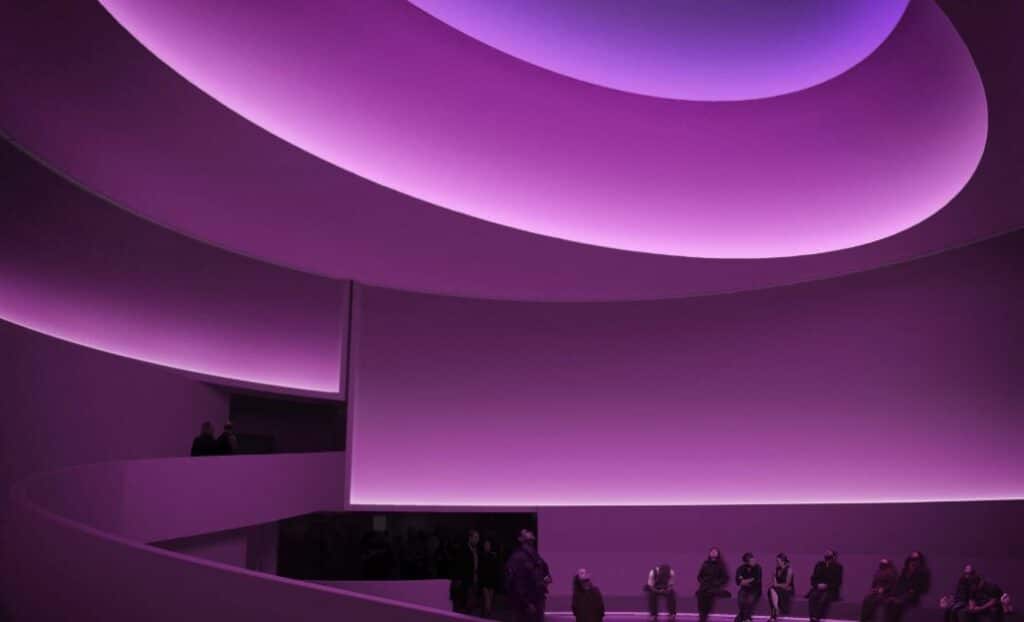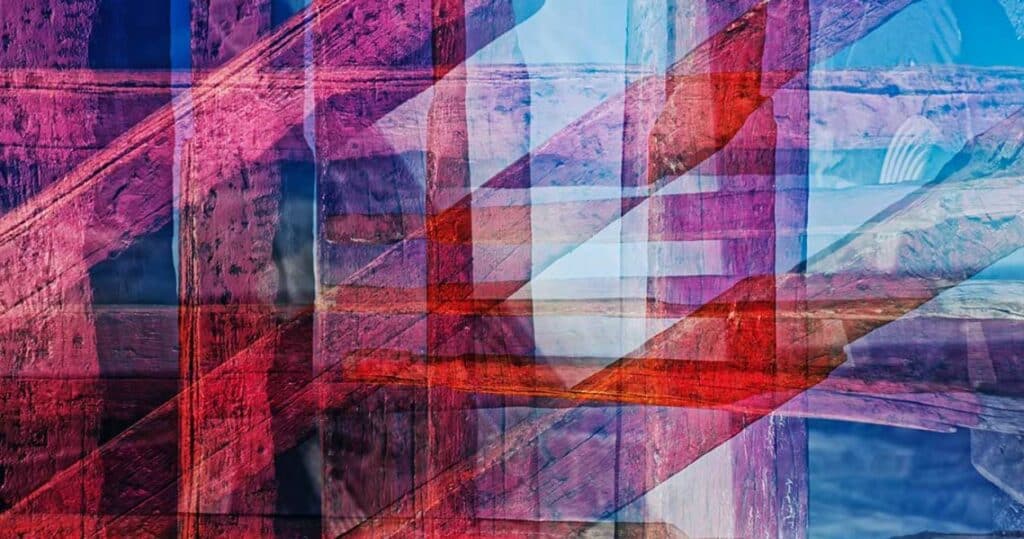“Brushing for Change: Artists Creating a Sustainable Canvas”
In this article, we will read about artists using art as a medium for climate change activism. Artists from all over the world are putting their creative skills to use to raise awareness about the effects of climate change in response to the growing number of environmental problems. These visionaries are igniting conversations, raising awareness, and inciting action for a sustainable future through the bright and thought-provoking masterpieces that they have created.
These ten artists are utilizing their profession as a potent instrument for climate change activism, bringing attention to one of the most crucial challenges of our time. Their work ranges from exquisite visual arts to immersive installations.
We salute the inventiveness and vision of ten famous artists who have brought the art of repurposing and rethinking commonplace materials to a higher level.These ten artists have shown us that there is extraordinary beauty to be discovered in the mundane, which forces us to reevaluate our assumptions and motivates us to view the world from a different perspective.
10 Artists Using Art as a Climate Change Activism Tool
Climate change is one of the most pressing issues of our time, and it requires collective efforts to combat its devastating consequences. In addition to the significant roles that scientists, legislators, and activists play in resolving this global crisis, artists also make important contributions by using their creative talents to spread awareness and inspire action. Here is a list of ten artists who have used the power of art as a tool for activism in the fight against climate change:
1. Olafur Eliasson

Olafur Eliasson is an Icelandic-Danish artist who is best known for creating immersive and thought-provoking installations that investigate the connection between people and the natural world. It is common for his art to present viewers with a new perspective on their surroundings, causing them to question where they stand in relation to the natural world. In his 2014 exhibit “Ice Watch” at London’s Tate Modern, Eliasson brought attention to the melting of glaciers as a result of climate change. The work consisted of the transport of thirty chunks of glacial ice from Greenland.
Key Profile: Olafur Eliasson
| Aspects | Derscription |
| Nationality: | Danish-Icelandic |
| Art Style: | Large-scale installations emphasizing the environment |
| Key Themes: | Sustainability, natural elements, and climate change |
| Notable Works: | “The Weather Project,” “Ice Watch,” “Waterfall” |
| Achievements: | Recipient of numerous awards for his environmental art |
| Impact: | Known for raising awareness about environmental fragility |
2. Manish Sabu

The sculptures and installations that Indian artist Manish Sabu produces are mesmerising, and they tackle topics such as the deterioration of the natural environment and social injustice. His artwork frequently makes use of reclaimed materials to show the influence that consumerism and wastefulness have on the natural world. Some examples of these materials include abandoned plastic bottles and electrical waste. In his ongoing “Wasteland” series, Sabu transforms discarded materials into intricate works of art, questioning the relationship between humans and the objects they consume.
Key Profile: Manish Sab
| Aspects | Derscription |
| Nationality: | Indian |
| Art Style: | Conceptual art, installations |
| Key Themes: | Cultural identity, social issues |
| Notable Works: | “Identity Check,” “Reflections” |
| Achievements: | Recognized for challenging societal norms |
| Impact: | Highlights the complexities of identity |
3. Mandy Barker

Photographer and mixed-media artist Mandy Barker from the United States investigates the connection that exists between people and the natural world via her work. In many of her pieces, she places photographs of man-made structures next to those of natural settings, so drawing attention to the negative effects of urbanisation and development on the natural world. In her series “Vanishing Point,” Barker photographs disappearing glaciers and icebergs, capturing the visible effects of climate change on the planet’s icy landscapes.
Key Profile: Mandy Barker
| Aspects | Derscription |
| Nationality: | British |
| Art Style: | Photography, installations |
| Key Themes: | Plastic pollution, marine conservation |
| Notable Works: | “Soup,” “Beyond Drifting” |
| Achievements: | Notable contributions to marine conservation |
| Impact: | Raises awareness about the perils of pollution |
4. Gregory Colbert

Gregory Colbert, a Canadian photographer and filmmaker, captures photos of animals and the natural world that are breathtaking and ethereal. He frequently employs elaborate sets and techniques to evoke a sense of wonder and connection in the viewer. Through his work, he hopes to increase people’s awareness of the connection of all living things as well as the significance of protecting the natural world. Colbert worked with a team of scientists on his “Ashes to Ashes” project to document the damage that climate change is having on the Arctic. The project serves as a powerful reminder of the precarious nature of the ecosystems on our world.
Key Profile: Gregory Colbert
| Aspects | Derscription |
| Nationality: | Canadian |
| Art Style: | Photography, film, installations |
| Key Themes: | Human-animal relationships, nature |
| Notable Works: | “Ashes and Snow,” “Inherit the Earth” |
| Achievements: | Known for his evocative wildlife imagery |
| Impact: | Promotes empathy for the natural world |
5. Jill Magid

Jill Magid is an American artist who investigates the interaction between humans and technology. She frequently uses her work to emphasize concerns pertaining to the environment and society. Magid collaborated with indigenous communities in the Peruvian Amazon to produce sculptures and performances as part of her “Water Sentinels” project. The goal of the project was to raise awareness about the significance of preserving the rainforest and the water supplies it contains.
Key Profile: Jill Magid
| Aspects | Derscription |
| Nationality: | American |
| Art Style: | Poetry, mixed media installations |
| Key Themes: | Language, culture, social consciousness |
| Notable Works: | “SLOT,” “Labor,” “Speech Acts” |
| Achievements: | Recognized for her innovative artistic approach |
| Impact: | Challenges conventional notions of art |
6. Theaster Gates

Theaster Gates is a British artist who creates sculptures, installations, and performances that investigate topics such as community, identity, and environmental justice by using objects and materials found in urban contexts. His work frequently makes use of reused materials, such as salvaged wood and artefacts that have been thrown away, in order to emphasise the possibilities for transformation and reuse.
Key Profile: Theaster Gates
| Aspects | Derscription |
| Nationality: | American |
| Art Style: | Installation, urban renewal projects |
| Key Themes: | Community, social justice, heritage |
| Notable Works: | “Dorchester Projects,” “Black Vessel” |
| Achievements: | Renowned for revitalizing neglected spaces |
| Impact: | Promotes community engagement |
7. Agnes Denes

Agnes Denes, an artist from the United States, creates land art projects that investigate the connection between people, the natural world, and modern technology. Her work often utilizes mathematical concepts and patterns to create geometric shapes and patterns in the landscape, raising questions about our impact on the environment. As part of her project titled “Wheatfield – A Confrontation,” Denes cultivated a two-acre wheat field in the middle of Manhattan with the intention of questioning the dichotomy that exists between urban and rural settings.
Key Profile: Agnes Denes
| Aspects | Derscription |
| Nationality: | Hungarian-American |
| Art Style: | Environmental art, conceptual art |
| Key Themes: | Ecology, philosophy, human intervention |
| Notable Works: | “Wheatfield – A Confrontation,” “Tree Mountain” |
| Achievements: | Known for her pioneering environmental projects |
| Impact: | Highlights the intersection of nature and art |
8. Hiroshi Sugimoto

Hiroshi Sugimoto is a well-known Japanese photographer who is recognised for his long-exposure images of natural phenomena such as seascapes, woods, and other natural occurrences. His work captures the passage of time and the power of nature, often creating images with a meditative and contemplative quality.
Key Profile: Hiroshi Sugimoto
| Aspects | Derscription |
| Nationality: | Japanese |
| Art Style: | Photography, architectural installations |
| Key Themes: | Time, history, cultural artifacts |
| Notable Works: | “Seascapes,” “Theaters” |
| Achievements: | Internationally acclaimed for his photography |
| Impact: | Explores the relationship between art and time |
9. Maya Lin

American artist Maya Lin is known for her sculptures and memorials that explore themes of memory, loss, and environmentalism. The Vietnam Veterans Memorial in Washington, District of Columbia is her most well-known work, and it is a dramatic and moving memorial to the servicemen who lost their lives during the Vietnam War.
Key Profile: Maya Lin
| Aspects | Derscription |
| Nationality: | American |
| Art Style: | Architecture, environmental art |
| Key Themes: | Nature, memory, environmental preservation |
| Notable Works: | Vietnam Veterans Memorial, “Storm King Wavefield” |
| Achievements: | Noted for her poignant memorial designs |
| Impact: | Raises awareness about environmental issues |
10. James Turrell

The work of James Turrell, an American artist, is best known for his light installations, which investigate perception, space, and the immateriality of light. His art frequently produces fully immersive settings that force viewers to reevaluate their understanding of their immediate environment and encourages them to reflect on their position in the greater cosmos as a result.
Key Profile: James Turrell
| Aspects | Derscription |
| Nationality: | American |
| Art Style: | Light installations, perceptual art |
| Key Themes: | Perception, spirituality, light as medium |
| Notable Works: | Roden Crater, “Skyspaces” |
| Achievements: | Renowned for his mastery of light and space |
| Impact: | Evokes contemplation and sensory experiences |
Environmental action is more important than ever in the fight against climate change and ecological destruction. In this age of awareness, many innovative projects use creativity and community to raise awareness and inspire change.
Because of its unique capacity to overcome boundaries of language and spark emotions, art is a powerful medium for climate change action. The ten artists that were just listed, along with a great number of other artists, are among the many who have utilized the power of art to convey the critical need for environmental protection and sustainable living. They encourage audiences to take collective action to conserve our planet by inspiring audiences to examine the connection between humans and the natural world through the various and compelling works that they have created.
FAQ
What role does art play in climate change activism?
Art is a great instrument for increasing awareness and building empathy, allowing artists to communicate complicated environmental issues to a broad audience. Art stimulates people to evaluate their relationship with the environment and encourages them to participate in sustainable practises by eliciting emotions and inspiring critical thinking.
What are some of the most common themes in climate change art?
The impact of human activities on ecosystems, the urgency of environmental conservation, the interdependence of all life forms, and the need for sustainable living practises are all common topics in climate change art. Artists commonly investigate the effects of climate change on vulnerable populations, highlighting the significance of environmental justice and collective action.
How can individuals use art to assist climate change activism?
By engaging with and promoting the work of environmental artists, participating in local art initiatives that promote sustainability and conservation, and using art to educate and inspire others about the importance of environmental stewardship, individuals can support climate change activism through art. Furthermore, by supporting environmental organisations and efforts through art-related events and fundraisers, you may help to advance the larger climate change cause.





